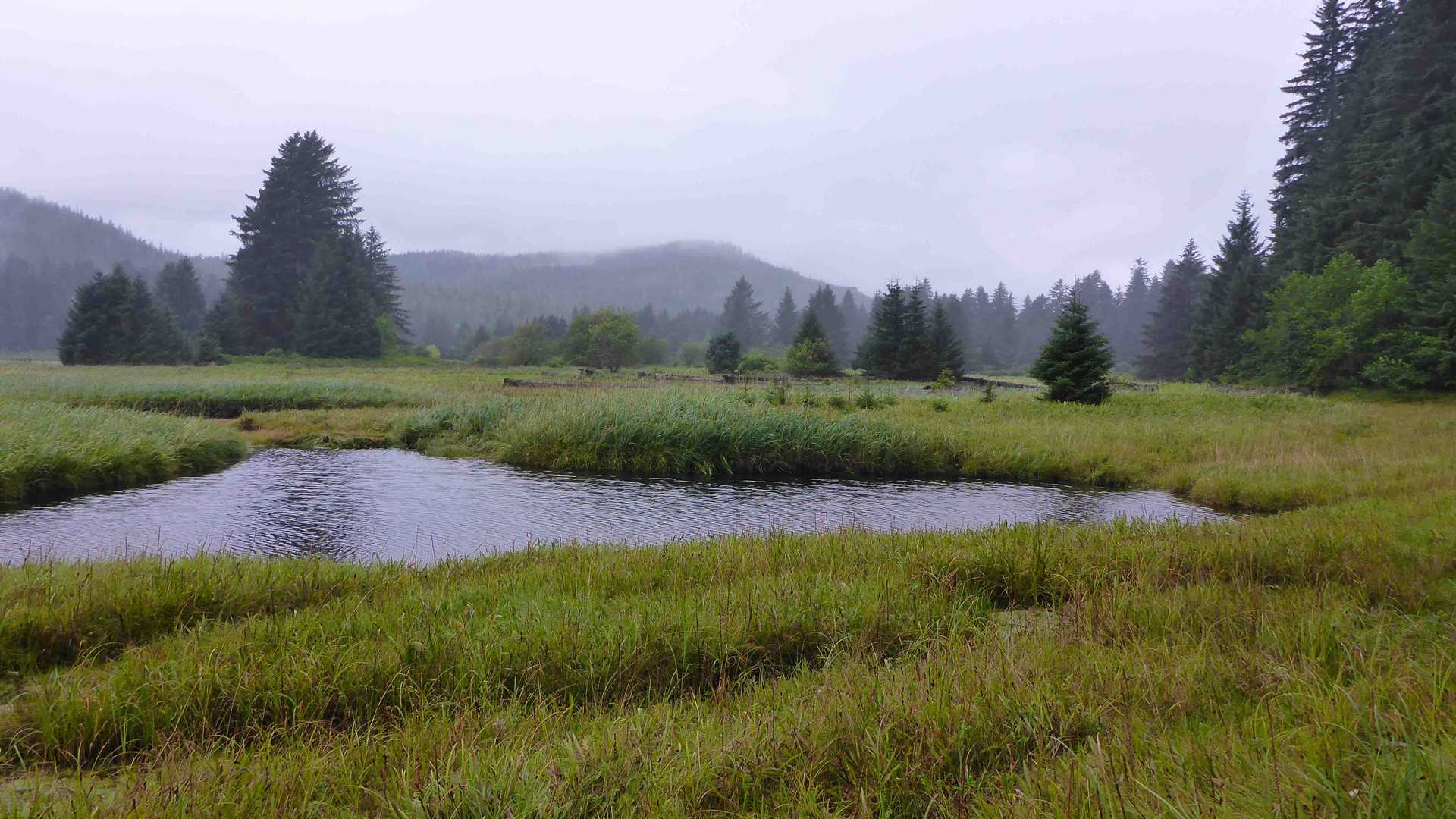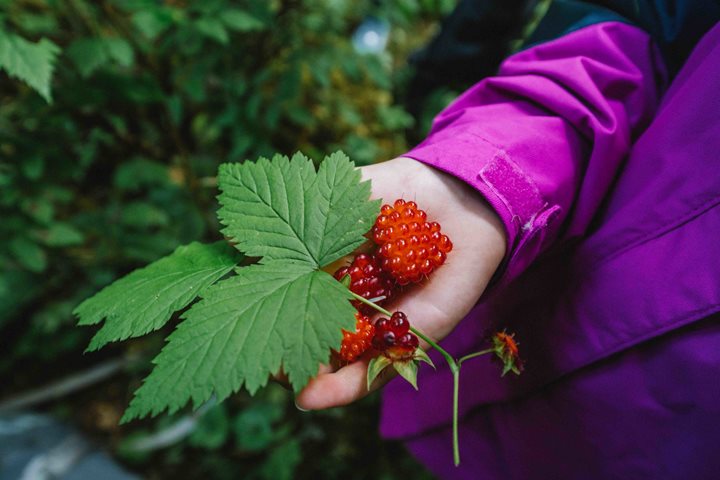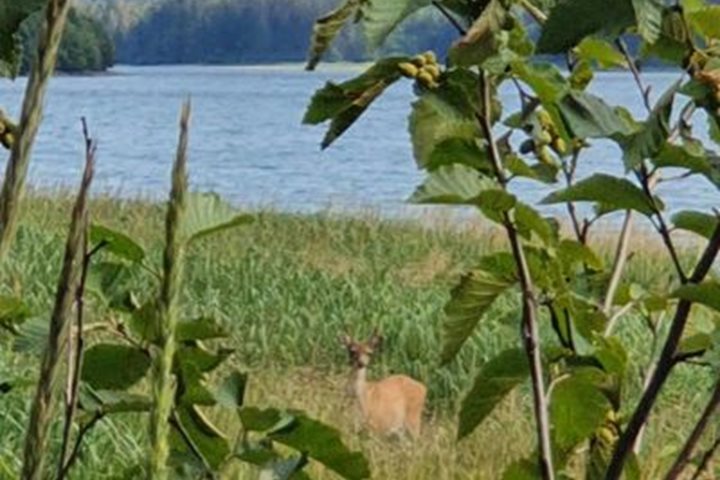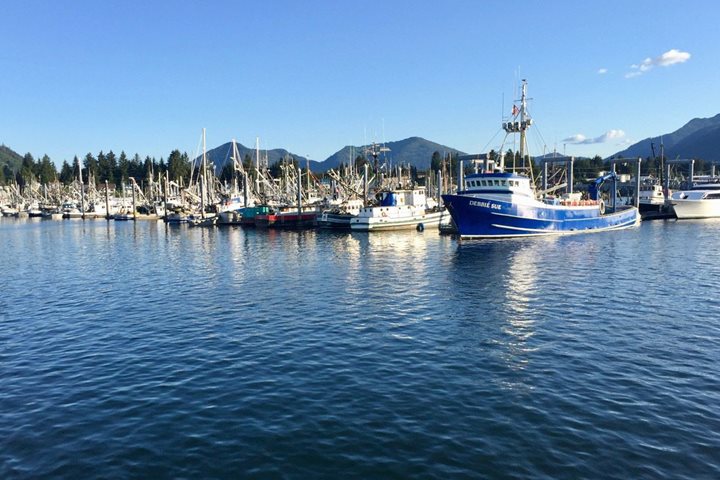What a spectacular first morning aboard the National Geographic Sea Lion! Our expedition leader Sheri woke us early, with 6:30 a.m. news of killer whales ahead. We dressed warm and mustered on-deck, greeted by the soft blows and towering dorsal fins of the ocean’s top predator. Spread out over all points of the compass, these killers were probably a diffuse pod of “residents,” or fish-eaters – no doubt in close sonic communication despite their seemingly long distance from one individual to another. Soon, a second marine mammal joined the show: a humpback whale. No sooner had we seen its first blows than the whale leapt bodily out of the ocean. A breach! Its 40-ton bulk slapped down on the surface with a massive splash, drawing gasps from the adults and screams of delight from the kids. Again and again it showed its tail flukes in a deep dive, then exploded straight up out of the water like a torpedo, breach after breach. We watched, awestruck, unable to pull away even when breakfast was called. Finally, leaving these magnificent cetaceans to their business, we ducked into Hood Bay. Hopefully nobody joined this expedition for the great views of the solar eclipse, as Southeast Alaska’s classic rain and fog obscured our view of the heavens – yet moments after the supposed eclipse maximum, we spotted a brown bear ambling on the shore.
After lunch we disembarked at Sitkoh Bay, on Chichagof Island. While half of us set off paddling kayaks along the shore, my group hiked through the forest in a gentle rain. The Tongass National Forest is the world’s greatest stronghold of old growth temperate rainforest, an ecosystem that stores more carbon per unit area than any other, making its 17 million acres a globally significant carbon sink that mitigates the impacts of climate change. Walking along an old logging road made for an ironic introduction to one of the world’s great remaining forests – although it was good footing on a wet day. Thimbleberries and banana slugs were constant companions. The 7-foot diameter stumps of yesteryear’s cut by now had sizeable trees growing out of them. And occasionally we found immense trees still standing, left “on the stump” because of their unfavorable location or grain. Leaving the old road, we walked up into the forest, and with seven people, arms outstretched, we embraced the largest Sitka spruce we could find. It was a wonderful start to our Southeast Alaskan voyage.







